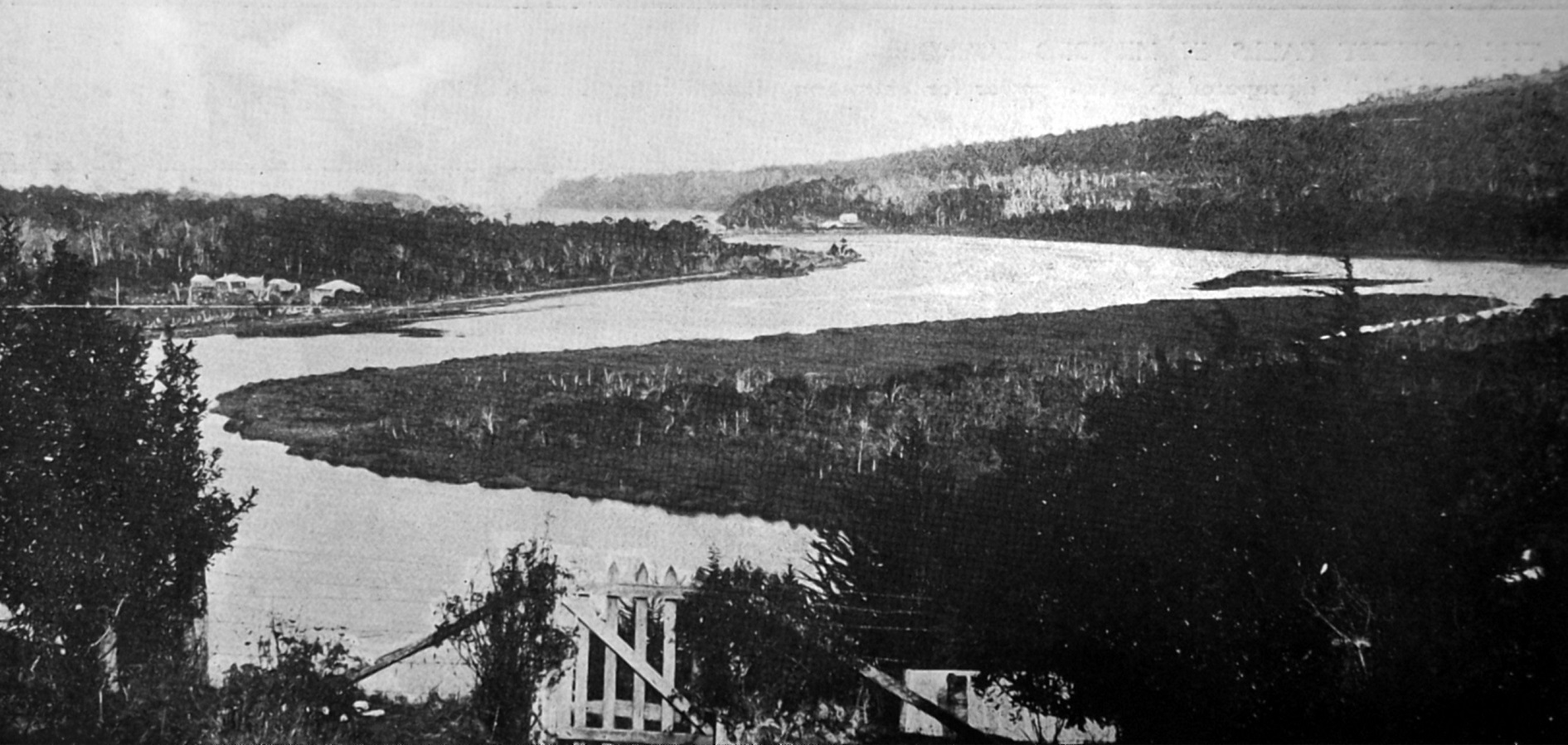Much has been written concerning the lakes of Otago and Southland, the Hot Springs of the north, and the glacial wonders of the Southern Alps. Each year these places are visited by hundreds of tourists, who proclaim them among the wonders of the world. But to visit any of these resorts involves a fair amount of expense, and there is many a Dunedinite who can spare neither the time nor the money. For such as these Nature has provided, with easy reach of Dunedin, one of the prettiest and one of the most romantic holiday resorts that are to be found in New Zealand. To reach this delightful place by train one must branch off at Balclutha and transfer to the Catlins line. From the time the passenger leaves Balclutha the holiday begins. The train in which he travels is wonderful — wonderfully slow. But this adds to the pleasure of the journey. From Owaka onwards the train winds through beautiful bush and along the banks of bush creeks, until the terminus is reached at Tahakopa. There is much to be seen at Tahakopa — gorgeous bush, dashing waterfalls, and a boat trip on the Tahakopa River, which in beauty can hardly be surpassed by any other river scene in New Zealand. But we have not yet reached our destination. Papatowai, at the mouths of the Tahakopa and the Maclennan Rivers is our objective. Another two miles along a wonderful beach overhung with all the variety our native bush can offer; a mile up The Tautuku River, and we reach the Tautuku boarding-house. Here is accommodation for about 16 guests. The proprietors have acquired the gift of reviving tired travellers. Nothing is too much trouble for them. Everything they possess is given for our pleasure — their boat, fishing apparatus, their knowledge of the district and its romantic past whaling days, and last, but not least, their bountiful larder. Armed with acetylene lamps and spears, we waded up and down the river, which is close to the house, in search of flounders and soles. These are very plentiful, and the sport of spearing them is most absorbing.
Polio epidemic worsens
A remarkable feature of the epidemic of infantile paralysis of which the dominion is having unfortunate experience is its widespread character. The Minister of Health early in the week showed that there had been 522 cases since the visitation began to make itself manifest in the North at the beginning of December, and the range of the epidemic has been extended practically from one end of New Zealand to the other. Otago and Southland have escaped very lightly so far. In 1916, when over a thousand cases in all were reported, Otago and Southland furnished only five and twenty cases between them. Nevertheless, cases have developed in both Otago and Southland during the present outbreak. The epidemic is, of course, the more baffling because of the mystery that surrounds the causation of it.
The discovery and isolation of the germ of infantile paralysis constitutes a problem which medical science has yet to solve. The manner in which the infection is carried seems at present to defy calculations. In its earlier stages the disease is attended with symptoms so various as to render diagnosis difficult. Investigating the origin and nature of infantile paralysis should receive all due attention if there is to be any contribution of value from this part of the world to medical knowledge respecting an obscure and dread disease. — editorial — ODT, 20.2.1925
Compiled by Peter Dowden













